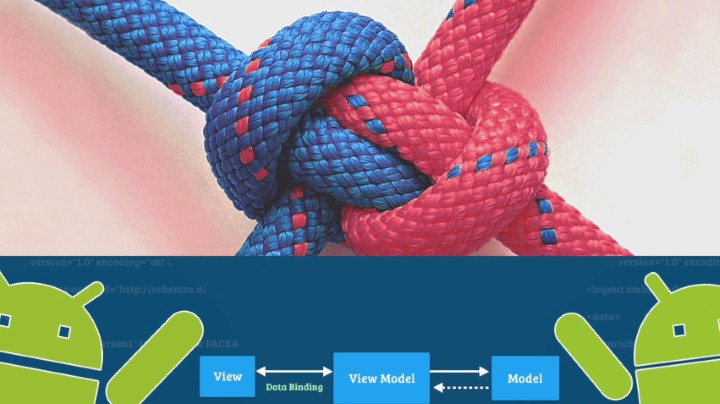Android Data Binding: Under the Hood (Part 2)
Let's talk about the magic happening behind the dynamic data updates and click actions when we use data binding for our views
Blog by theDroidLady
Introduction
Hola folks 👋 , I’m back with part 2 of learning & understanding how Data Binding works behind the scene.
In the previous blog, we saw different alternatives to findViewById, their pros & cons and how DataBinding works under the hood with static data. If you haven’t read it yet, I would recommend to quickly go, read and come back to know more.
In this article, let’s talk about the magic happening behind the background data updates and click actions.
Well, I am sure if you are reading this article, you have already set your mind to know the magic, implementation and the players behind the scene. So let’s get started and deep dive into these aspects.

Click Events & Data Update
Let’s say I have a textView and a button in my XML. On button click, I want to update my text. Here comes the role of ViewModel (If you are working with MVVM, where we write all our business logic. This is my XML:
<?xml version="1.0" encoding="utf-8"?>
<layout xmlns:android="http://schemas.android.com/apk/res/android"
xmlns:app="http://schemas.android.com/apk/res-auto"
xmlns:tools="http://schemas.android.com/tools">
<data>
<variable
name="viewmodel"
type="com.example.myapplication.MainViewModel" />
</data>
<androidx.constraintlayout.widget.ConstraintLayout
android:layout_width="match_parent"
android:layout_height="match_parent"
tools:context=".MainActivity">
<TextView
android:id="@+id/count_textview"
android:layout_width="wrap_content"
android:layout_height="wrap_content"
android:text="@{Integer.toString(viewmodel.count)}"
app:layout_constraintLeft_toLeftOf="parent"
app:layout_constraintRight_toRightOf="parent"
app:layout_constraintTop_toTopOf="parent"
app:layout_constraintBottom_toBottomOf="parent"
tools:text="0" />
<Button
android:id="@+id/action_button"
android:layout_width="wrap_content"
android:layout_height="wrap_content"
android:layout_marginTop="30dp"
android:onClick="@{() -> viewmodel.onIncrement()}"
android:text="Increment"
app:layout_constraintLeft_toLeftOf="parent"
app:layout_constraintRight_toRightOf="parent"
app:layout_constraintTop_toBottomOf="@id/count_textview" />
</androidx.constraintlayout.widget.ConstraintLayout>
</layout>
And, This is my MainViewModel,
class MainViewModel : ViewModel() {
private val _count = MutableLiveData<Int>()
val count: LiveData<Int> = _count
fun onIncrement() {
_count.value = (_count.value ?: 0) + 1
}
}
I updated my MainActivity to use ViewModel,
class MainActivity : AppCompatActivity() {
private lateinit var viewModel: MainViewModel
override fun onCreate(savedInstanceState: Bundle?) {
super.onCreate(savedInstanceState)
val binding: ActivityMainBinding =
DataBindingUtil.setContentView(this, R.layout.activity_main)
viewModel = ViewModelProvider(this).get(MainViewModel::class.java)
binding.lifecycleOwner = this
binding.viewmodel = viewModel
}
}
Note: To use a LiveData object with your binding class, you need to specify a lifecycle owner to define the scope of the LiveData object.
Now, Whenever a user clicks the button, the count is incremented and as this count is a LiveData and has been observed in XML by the count_textView, you will always see the latest updated value.
Wow, So Easy it is. But, How exactly is this happening? How does DataBinding class know that this view needs to be updated?
Well, We have the answer,
In our ActivityMainBinding class, you will find this
protected ActivityMainBinding(Object _bindingComponent, View _root, int _localFieldCount,
Button actionButton, TextView countTextview) {
super(_bindingComponent, _root, _localFieldCount);
this.actionButton = actionButton;
this.countTextview = countTextview;
}
You can see a field named _localFieldCount. This parameter now holds a value of 1 because now the XML is having one view which is observing for any changes.
In the case of static data, where we just rendered the model values, this
_localFieldCountwas 0 as no view was observing for any changes. (Check the previous article for reference.)
And this class ActivityMainBinding extends ViewDataBinding, so it calls the Parent class constructor, where we have a WeakListener array which is nothing but an array of Weak reference objects which do not prevent their referents from being made finalizable, finalized, and then reclaimed. The best part is we don’t need to worry about their cleanups. :-)
/**
* The observed expressions.
*/
private WeakListener[] mLocalFieldObservers;
protected ViewDataBinding(DataBindingComponent bindingComponent, View root, int localFieldCount) {
mBindingComponent = bindingComponent;
mLocalFieldObservers = new WeakListener[localFieldCount];
........
}
So whenever an activity sets a lifecycle owner, which is in our case is Activity Scope, ViewDataBinding class registers for a listener i.e onStartListener. Whenever the activity comes in onStart state, binding class starts executing the bindings.
@OnLifecycleEvent(Lifecycle.Event.ON_START)
public void onStart() {
ViewDataBinding dataBinding = mBinding.get();
if (dataBinding != null) {
dataBinding.executePendingBindings();
}
}
In our ActivityMainBindingImpl, we have our executeBindings, which takes the count value from ViewModel and passes to updateLiveDataRegistration method.
@Override
protected void executeBindings() {
......
if (viewmodel != null) {
// read viewmodel.count
viewmodelCount = viewmodel.getCount();
}
updateLiveDataRegistration(0, viewmodelCount);
........
}
This updateLiveDataRegistration asks to create a weak listener for the livedata variable we passed and then start listening for the updates. (This internally sets the same lifecycleOwner for the liveData as well) This localFieldId is set to 0 in this case.
protected boolean updateLiveDataRegistration(int localFieldId, LiveData<?> observable) {
mInLiveDataRegisterObserver = true;
try {
return updateRegistration(localFieldId, observable, CREATE_LIVE_DATA_LISTENER);
} finally {
mInLiveDataRegisterObserver = false;
}
}
Now when the user clicks the button, onChanged() method from our LiveDataListener gets called,
@Override
public void onChanged(@Nullable Object o) {
ViewDataBinding binder = mListener.getBinder();
if (binder != null) {
binder.handleFieldChange(mListener.mLocalFieldId, mListener.getTarget(), 0);
}
}
This eventually calls our own implementation of onFieldChange(), which looks like this,
@Override
protected boolean onFieldChange(int localFieldId, Object object, int fieldId) {
switch (localFieldId) {
case 0 :
return onChangeViewmodelCount((androidx.lifecycle.LiveData<java.lang.Integer>) object, fieldId);
}
return false;
}
Inside this onChangeViewModelCount() method, we have mDirtyFlags(a long value) which is getting updated and it will request for rebinding which will call execute pending bindings and get views updated on the screen.
synchronized(this) {
mDirtyFlags |= 0x1L;
}
This process keeps on repeating every time we click our button.
So this is how the click events and updates are handled by DataBinding class.
For reference, you can find my DataBinding sample here
This is published on ProAndroidDev
Enjoy reading!!